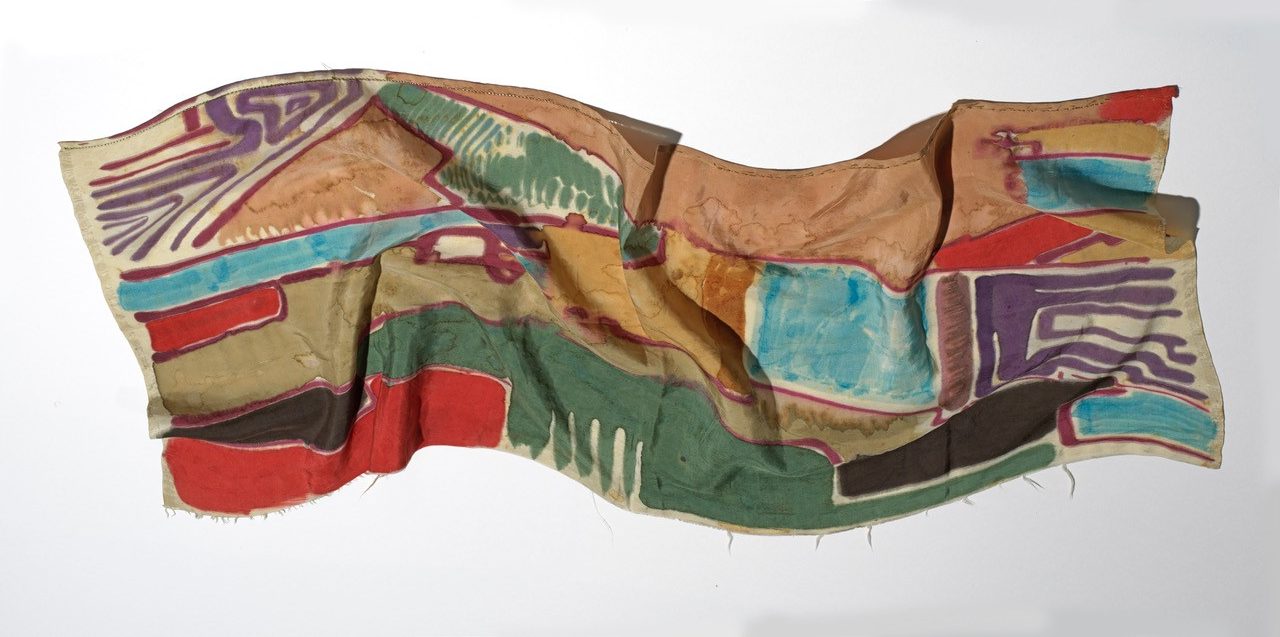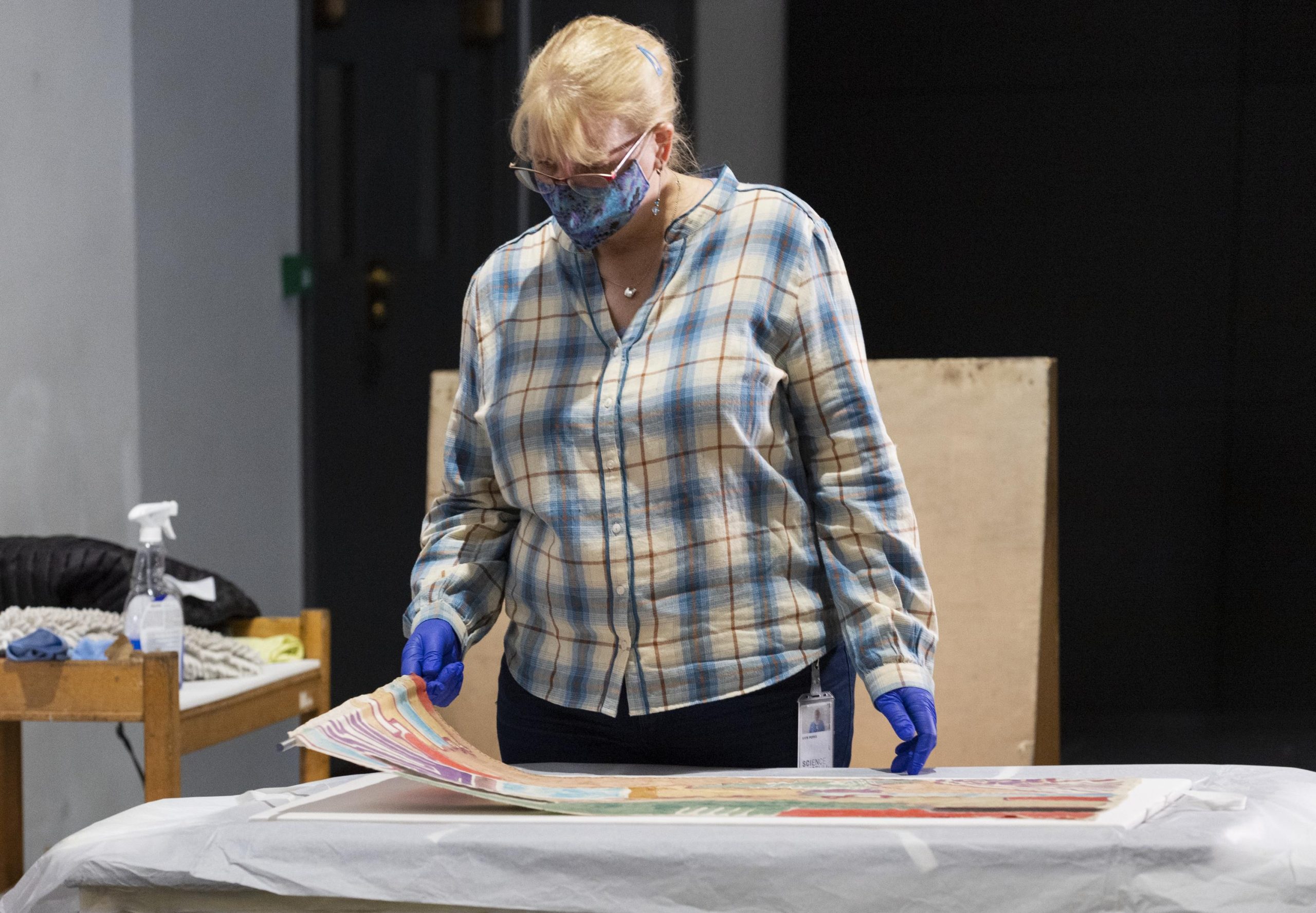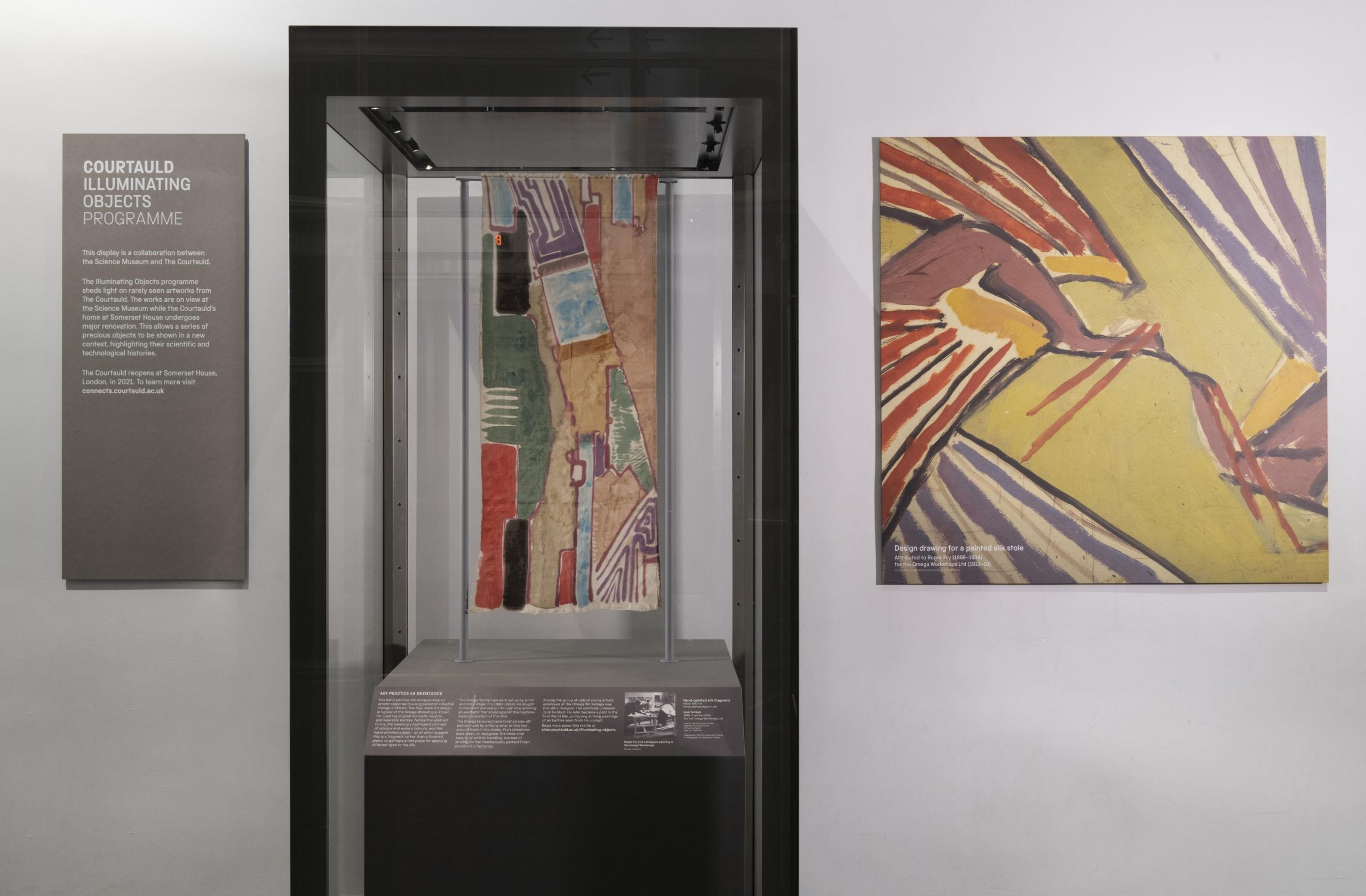I started work as the McQueens Illuminating Objects Intern just a little over a year ago in April 2020 as the COVID-19 lockdown was beginning and I’m still here!
My internship has therefore been a unique one and I was fortunate to have the opportunity of an extended selection process at the beginning of the process.
Due to my background in bespoke tailoring, the first item I was drawn to from the Courtauld’s collection was this hand-painted silk fragment, fabric being a material I felt comfortable with. However, this piece was initially very intriguing with its experimental brush strokes and raw edges.

There were so many beautiful objects to trawl through in The Courtauld’s collection and my final shortlist of four included the textile but also ceramics and glass. I had my initial four shown to me through a zoom call with The Courtauld’s fabulous technician Matthew Thompson which you can read about in this Courtauld blog post.
After further discussion I selected the silk fragment and got stuck into my research right away. It felt quite important to me as a designer for a textile object to be recognised and on display in the Science Museum.
The silk was given to The Courtauld in 1959 by Winifred Gill and was made in 1913-14 by Jock Turnbull. Both were part of The Omega Workshops, an art and design studio set up by artist and critic Roger Fry.

The piece is fitting for the Science Museum both because its manufacture raises scientific questions, and due to Roger Fry’s ethos at the Omega Workshops. He wanted to blend the realms of fine art and wearable fashions to create an aesthetic standing against the machine-made production of the time.
Dr Alexandra Gerstein, Curator of Decorative Arts at The Courtauld, was a wealth of knowledge for all things related to The Omega Workshops. She advised me and brought alive much of the historical research, as well as numerous books on the specific areas I was looking at for the online web content.
Dr Katy Barrett, Curator of Art Collections at the Science Museum, would guide me on thinking about the piece in relation to this different museum context. Something that we felt emerged quite strongly from my research process was the importance of showing my personal creative responses online alongside the historical aspects of the silk.
The internship is also about looking at the objects from the intern’s disciplinary background, showing it to the viewers in the light of their specialism. So, by drawing, testing dyes and designing from the patterns and textures of the silk I was able to understand and draw conclusions in a responsive way.
I had regular discussions about the display and liaised with the Science Museum’s 2D and 3D designers for its specific support structure. For me, it was very important to have the silk shown as simply as possible, reflecting how I first saw it, albeit through a screen, being gently lifted out of its box and flowing down.

The piece says so much by itself and the cloth has such a beautiful movement that its integrity needed to be kept. However, it is also important for a collection piece to have the correct support, light, pressure and material used when it goes on display, so as not to harm the object and I learnt that a lot of work can go into even the simplest of designs!
A truly wonderful part of the internship was finally being able to meet in person in the collection’s storage unit and see the silk in discussion with textile conservator Louise Squire and paper conservator Kate Edmondson.
I learnt a lot as we handled the silk and discussed its story, from the colours in the silk and how they related to other works in the Omega, right down to the unique stitches along its hem. The morning was an inspiring meeting of professionals coming together to talk over this one little piece of history.
After gathering all the information with lots of writing, edits and meetings, I have produced a dynamic webpage to accompany the short information that accompanies the silk on display. I watched the installation of the silk in mid-May through video call and can’t wait to visit the Science Museum to see the piece on display in real life.
I look forward to seeing and hearing what visitors think of what I find a visually striking piece and hope they join me in now seeing science in the most unlikely of places.
The Hand-Painted Silk Fragment is on display on the second floor of the Science Museum, between Mathematics: The Winton Gallery and the Information Age gallery. It is part of the McQueens Illuminating Objects partnership, while The Courtauld is temporarily closed for a major refurbishment programme.
More information on the Hand-Painted Silk Fragment, the Omega Workshops, Jock Turnbull, and Sophie’s creative responses can be found on The Courtauld’s website.
